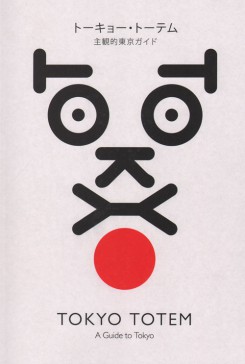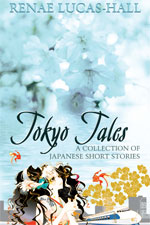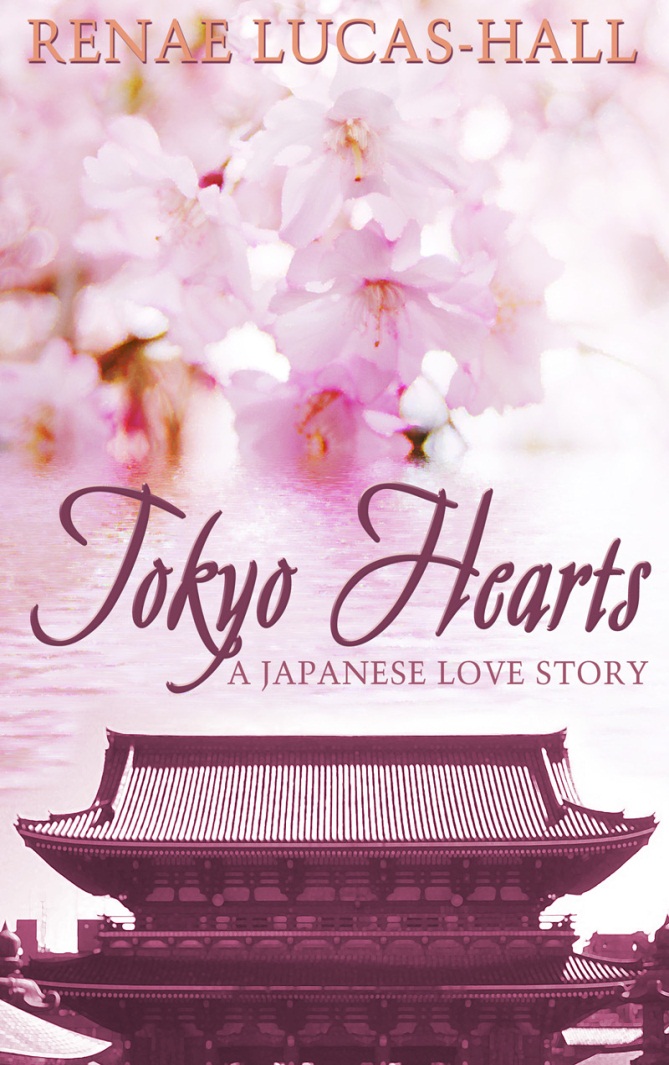 Tokyo Totem is one of the most stimulating, creative, and thought-provoking books I’ve ever had the pleasure to read. This is not your typical guidebook. It’s a juxtaposition of fascinating contributions from talented writers, artists, mangaka, designers and various other makers from Japan and all over the world. These talented creatives have skilfully provided their own unique and captivating interpretation of Tokyo and what it means to live in this mind-blowing capital city.
Tokyo Totem is one of the most stimulating, creative, and thought-provoking books I’ve ever had the pleasure to read. This is not your typical guidebook. It’s a juxtaposition of fascinating contributions from talented writers, artists, mangaka, designers and various other makers from Japan and all over the world. These talented creatives have skilfully provided their own unique and captivating interpretation of Tokyo and what it means to live in this mind-blowing capital city.
As you turn each page, you not only feel like you’re walking with these writers and artists on the very streets of Tokyo, you also feel like you’re looking at this city from a completely new angle. Each essay, photo, story, comic, sign, and scribble will transcend your understanding of this marvellous city. One minute you’re in a bathhouse wondering whether a yakuza member will empathize with a gaijin (foreigner), the next minute you’re learning something new about Tokyo’s unique topography or you’re looking at Tokyo’s signs and symbols from a completely different perspective. When you turn another page, you suddenly realise the idea of Metabolism (a post-war architectural movement) is very much an integral and exciting part of Japan’s architectural formation, and towards the end the section on urban commons and shared communities provides a very optimistic ending on how Japan will cope with its ageing population problems in the future.
Every section of Tokyo Totem was wonderfully inviting and stimulating so I know I’ll be returning to reread different excerpts in the future even though I’ve already finished and thoroughly enjoyed the entire book. The reason for this is because Tokyo Totem will leave you feeling intellectually and emotionally inspired by its contents. So much so, I think every designer and Japanologist should have a copy of Tokyo Totem on their coffee table, if not only for the fact that this book is beautifully presented with lovely thick paper, the colour coding for each section on the fore-edge as well as the hinge of the book delights the eye, and the cover is very cleverly designed with the word Tokyo in the shape of a totem face, set above the Japanese Hinomaru circle of the sun.
Below are snippets I’ve taken from Tokyo Totem for you to enjoy before you buy the book.
The Noble Art of Subjective Exploration – Christiaan Fruneaux
“On one particularly warm night I was riding the bicycle I had borrowed from a friend. During the day Tokyo can be hot and humid but the nights are pleasant. A nice breeze brushed against my body. I was on my way to have dinner with friends. Above my head an artificial firmament of slow flashing red lights stretched out. Warnings for airplanes and helicopters, so they wouldn’t fly into skyscrapers, those dark concrete mountains that occasionally rise up above you. Tokyo felt like a dream. Interspersed within the metropolitan expanse were intimate residential areas. I was constantly cycling through barriers, from shadowy almost suburban neighborhoods to light metropolitan high-rises. I felt myself falling in love with the city for the first time. It wasn’t love at first sight, but that doesn’t matter. Perhaps it makes the relationship even more precious.”
The City of Children – Chris Berthelsen
“I envy my children, their everyday environment: Its flowers and vegetable plots, insects and pets, informal structures, fruits, berries and edible greens. The human(e) scale and pungent personality of Tokyo’s neighborhoods distill the exquisite refinement of sight, taste, smell and touch in a shifting stream of experience that comprises sensation, memory and anticipation.”
City Beyond Time – Joris Berkhout
“The structure of Tokyo is not to be found in its physical form. Instead some suggest that another layer, imperceptible but powerful, defines the city, a layer of symbolic meaning, a mythic field that provides coherence in a fractured and ever-changing urban landscape. This field is defined by symbolic elements such as traditions and rituals, local foods, the signs of convenience stores and shops, and the ubiquitous vending machines.”
The Naked Neighborhood: Exploring the Metropolitan Bathscape – Greg Dvorak
“Tokyo baths usually invite passersby to enter via a large, sometimes neon, sign that says “yu” (hot water), written in red . . . Yakuza gangsters, whose tattoos are like permanent body suits, also come to soak away their stress . . . public baths that serve taxpayers, local sento businesses in Tokyo (many of whom are built on yakuza-controlled land) place no restrictions on these thuggish men. I actually consider it a thrill to bathe with them. Where else (except maybe in prison) does one have a chance to quietly marvel at the amazing artwork of dragons and giant carp and Japanese gods and goddesses dancing and cavorting across the backs and buttocks of gang members? And my local yakuza are actually quite friendly. Sometimes they even say hello.”
Documentarians of Change – A Short History of Street Fashion in Tokyo – Daphne Mohajer-Va-Pesaran
“Harajuku would earn a reputation as a place of counter-culture and rebellion, facilitating youth-led subcultures, art and fashion design (notably the work of Rei Kawakubo and Yohji Yamamoto). The area would become one that would allow young people to experiment with various dress styles and transform themselves during their formative years.”
In the Arena of Alternative Modernities – Julian Worrall
“Tokyo – in the coruscating kaleidoscope of its fashions; in the endless churn of its building sites; in the urban metronome of its train timetable; in its diurnal round of morning sobriety and nocturnal exuberance; in the annual exultation of spring sakura and the summer matsuri; in its April inductions and December big cleans; and in the slow toll of the New Year’s bell – the rhythms of an alternative modernity, one whose procession is nothing other than an eternal perambulation around the arena of history.”
Super Legal Buildings – Boots Street 長靴通り – Yasutaka Yoshimura
“If the widening of a road is anticipated, the architecture that can be built along this road is subjected to certain restrictions regarding the size and the structure. The manner in which these buildings align to the road, being lower in the front and higher in the back, almost seems like a row of boots neatly placed along the road. The lower front section gives rise to a moderate sense of scale that is optimal for stores. Typically one will find such buildings on relatively busy streets.”
Hera Shibori (Metal Spinning) – Fritzi Ponse
“Okada told me about metal-spinning craftsmen who produce not only pots and pans for local households, but also the noses for Japanese bullet trains and the casings for NASA’s rocket engines; they do it all by hand too, assisted by homemade machinery. I got curious. I wanted to meet these “high-tech craftsmen”. I wanted to see how they worked, how they combined manual skills and home-made-machinery to produce not just cutlery but vital parts for smartphones, satellites and high-speed trains as well.”
Tracing the Past in the City of the Future – Jephta Duillaart
“When I think about the geographical condition of Japan and its history of devastating earthquakes, tsunamis and fires, I’m beginning to understand the ease with which Tokyoites replace the old with the new. It is no surprise that the idea of Metabolism, a post-war architectural movement, sprung from this seismologic unstable soil. The Metabolist architects, of whom Kenzo Tange is the most well-known representative, believed in the continuous renewal of the city, identical to the organic growth of natural organisms.”
Feeling at Home in Tokyo – Anna Berkhof
“A concept that may help us to understand how Tokyoites feel at home is the duality of “uchi” and “soto”. Uchi means inside, soto means outside, and the dual concept is often associated with the creation of a sense of self in Japan. It is a cultural notion that distinguishes between us–uchi–versus others–soto, and it’s therefore a bit different from the Western duality of the individual versus the rest of the world. Uchi connotes not the individual but the closest group around the individual: the community. The key inside group is, of course, the family, but the word is also transferred to broader groups, like neighbours, schoolmates, colleagues, and even nationality.”
Omoiyari (Altruistic Sensitivity) – Maiko Arrieta Aoki
“The most important thing at the izakaya [tavern], even more important than the food, is that clients feel as comfortable as they would in their own homes. It is a place to relax. Good izakaya owners work hard to meet their clients’ needs. In Japanese this type of kindness is called omoiyari, which roughly translates into English as “altruistic sensitivity”. The omoiyari expressed in each dish shows the owner’s inner feelings for his clients: He makes each dish a powerful vehicle of communication. Omoiyari doesn’t only work one way (owner-client), though. It also works the other way (client-owner), with clients showing their gratitude through the way they eat their food or place their chopsticks.”
Single Ladies – Tomoko Kubo
“Condominium purchases by single women became an emerging phenomenon in Tokyo . . . Ebisu especially is well known as a “liveable town for single women”. There are many good restaurants that stay open late, and the suburb is filled with fashionable streets with high-fashion boutiques. It is a place where (wealthy) single women can enjoy their lives. But Eastern Tokyo, which includes Ginza and Ochanomizu, is also in high demand, since it is considered the center of high culture. There are many museums, large halls for classical music, and ballet, theaters for kabuki and other dramas, and many good bars and restaurants that people can visit before or after a show or exhibition. The condominiums in central Tokyo were built especially for single women who wish to enjoy this kind of mature urban lifestyle.”
New Urban Commons – Christian Dimmer
“While the gloomy narrative of Japan’s inevitable decline is still prominent, an alternative, far more positive reading is possible: it is the encouraging story of a dawning post-growth society whose seeds we may be seeing in Japan’s quickly multiplying new urban commons. It is a story of empowerment, of the careful treatment of natural resources, of a newly awakening do-it-yourself spirit, of creative problem solving, and of sharing precious time, space, and goods . . . Kankan Mori and its diverse residents form such a self-defined community. The residents not only share ample common resources – such as a shared office, a communal kitchen, a living room, two garden terraces, a laundry room, and a wood workshop – but they also engage in diverse communing activities in order to collectively manage their resources.”

ŌKINA KUTSU, BIG SHOE: “In Tokyo, the businessmen, the geisha girls and the fashion commandos all wear big shoes. A big shoe is usually worn three sizes too big. A leather shoe is mandatory for men . . . With the three inches between his heel and the backside of his shoe, he anticipates personal growth.” Read more at www.tokyototem.jp/bigshoe












